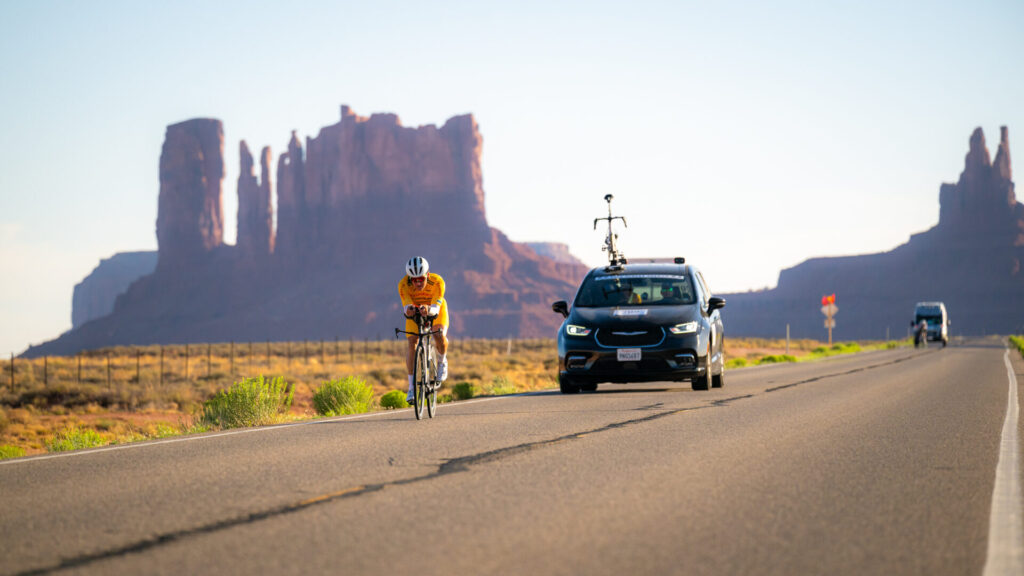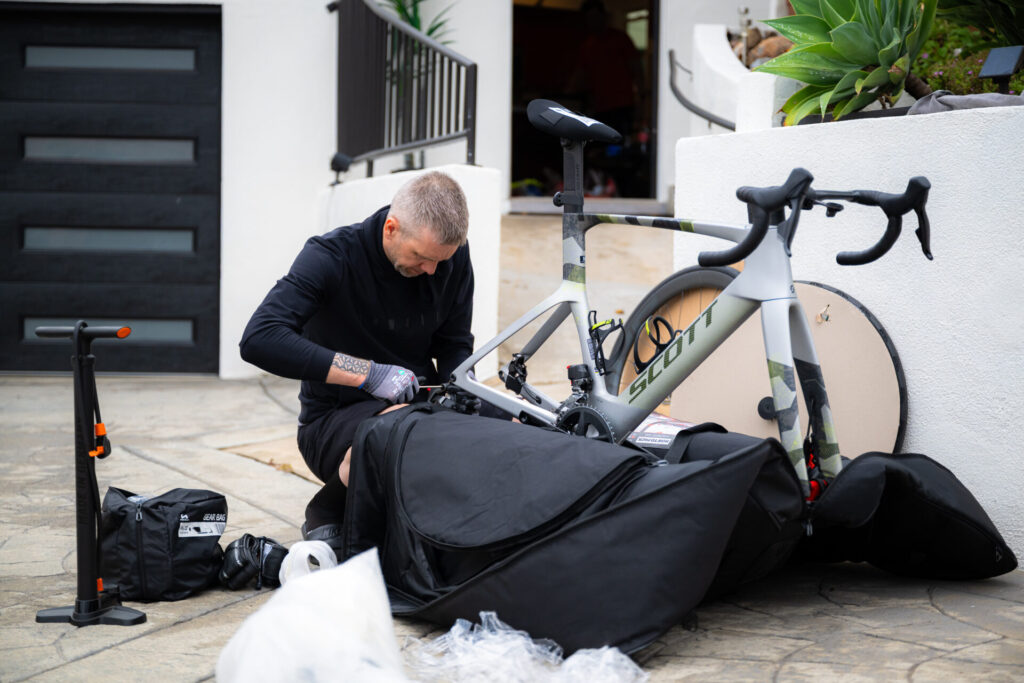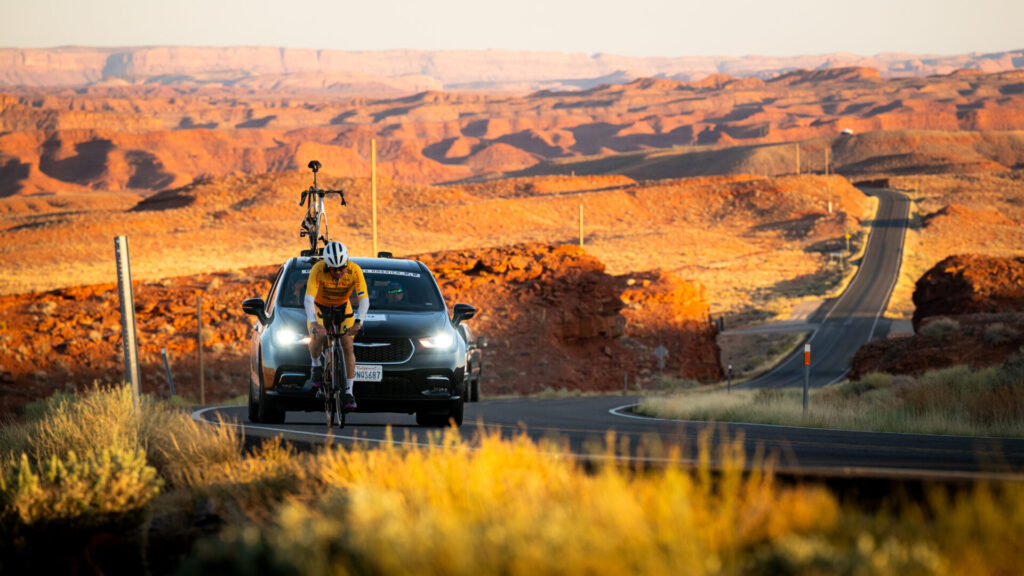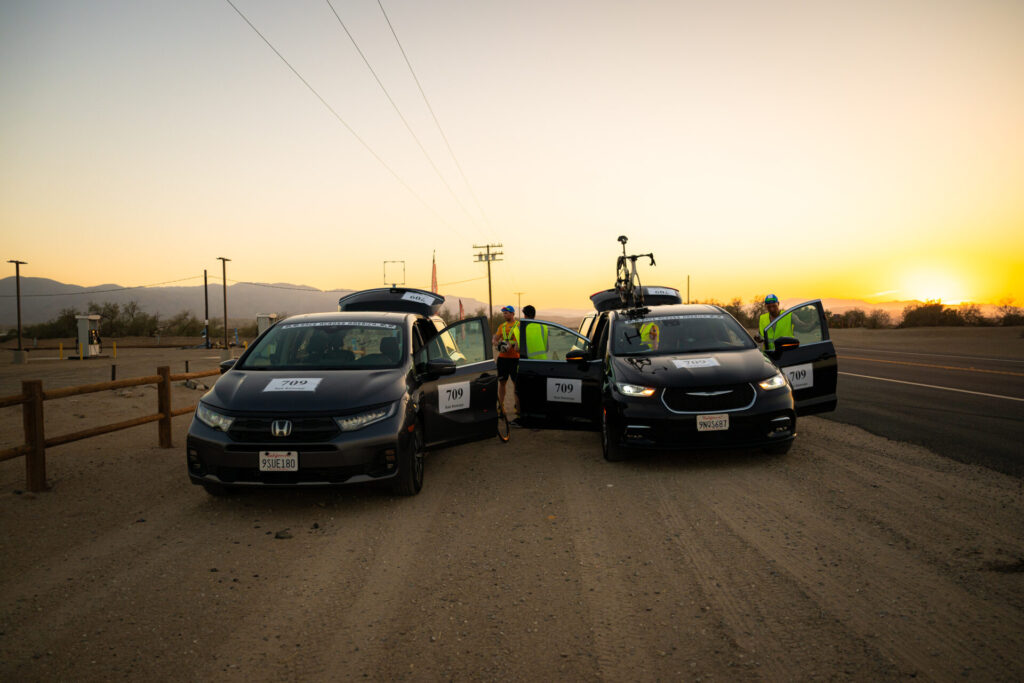During my first RAAM (Race Across America), I had more good fortune than I ever dared to hope for. You could say it was the classic case of “beginner’s luck.” But if I were to count on that same luck the next time, chances are things wouldn’t go nearly as smoothly.

Lost Bike and a Lifesaver Called AirTag
The first lucky moment happened even before the start. Upon arrival in the U.S., only one of my two bike cases appeared on the baggage carousel. Naturally, the missing one was the most important – my Scott Plasma 6. Without it, finishing the race would not have been realistic. For the past 10 years I’ve only trained and raced on a TT bike; riding 5000 km in a row on a road bike simply wasn’t an option, as my body wasn’t conditioned for that riding position over such distances.
We searched, waited, asked, called. We were about to give up when, several hours later, the bike finally turned up. What saved the day was the fact that I had placed an AirTag in both bike cases. Thanks to that, I could see right after landing that both bikes had indeed arrived in the U.S. and were in the same airport. One had simply gotten stuck somewhere in the baggage system—an area passengers have no access to.
At first, the AirTag showed that the missing bike was quite close to us, likely a couple of floors below. Later it was updated to a new location and stayed there for several hours. We went through every information desk and security officer we could find, explaining the situation, but without result. After three hours since landing, we were ready to leave and planned to return two days later when the next Finnair flight arrived—as we had been advised, since baggage issues were said to be handled by their representative.

We decided to wait five more minutes. A few moments later, an elevator next to us opened, and a worker rolled the bike case out at speed and disappeared without a word. We never found out what caused the delay. One way or another, the day—and most likely the race—was saved. Had we left the airport at that moment, chances are we wouldn’t have gotten the bike back before the start.
A Screw in the Tire and No Second Support Vehicle
The second stroke of luck came during the final days of the race. The support car—the one following directly behind me at night—signaled on the dashboard that the right front tire was losing pressure. On inspection, we discovered a screw in the tire. Air was leaking, but fortunately only slowly. We could keep going, stopping periodically to pump the tire back up.
Another fortunate coincidence: this rental car happened to come equipped with an electric compressor. If the pressure had dropped quickly, I would have had to stop as well—because at night, the rider is not allowed to move without a following vehicle. At that moment, the other support car was more than 100 km away at the overnight lodging. Waiting for it to reach us would have meant a huge loss of time.

In My View: The Optimal Setup Is 3 Cars and 6 People
These experiences confirmed my belief that three cars and six crew members is the optimal setup for a team to manage RAAM reliably and safely.
- Two cars can stay close to me at all times.
- The third car can go ahead—to arrange lodging, do shopping, and handle other logistics and preparations.
This structure also allows the crew to rest more properly. A well-rested crew is the foundation of efficiency, safety, and motivation.

Even with three cars, I would keep the same principle we used with two: the support vehicles remain fixed, while crew members rotate between them. That’s why we registered all rental cars so that every crew member was permitted to drive each vehicle. Constantly swapping out the escort vehicle is inefficient—it would require transferring all the equipment each time, which wastes valuable time and increases the risk of forgetting something important.
Time Savings Before and After Sleep
A three-car system would also save significant time each day.
- When one team prepares everything at the lodging—charging devices and power banks, organizing food, clothes, and hygiene items—I can quickly shower, eat, and head straight to bed.
- In the morning, another team wakes up at least an hour before me, gets their own things done, and prepares my breakfast, clothes, and gear.
With this rhythm, I could gain at least an extra hour of riding time per day starting from the second night (since I don’t sleep the first night).
This time, with a smaller crew, we woke up and went to sleep together. I didn’t want anyone, on top of their demanding duties, to also have to wake up earlier. It was my first RAAM, and I accounted for that. But next time, I would do it differently.
What Would This Change Cost?
One additional car and one extra crew member naturally mean a noticeable increase in expenses. I haven’t yet gone through this year’s RAAM budget in detail, but based on a preliminary estimate, it would add about €5,000–6,000 to this year’s total costs.
Ultimately, the strategy and possibilities depend on the budget I am able to secure with the help of my supporters. In this regard, I want to sincerely thank all the sponsors and partners who helped me get to the start line and made this entire undertaking possible.
This year’s budget was quite well planned, but some unforeseen expenses still came up, causing me to go slightly over budget. Fortunately, one supporter stepped in and helped cover that part—for which I am deeply grateful.